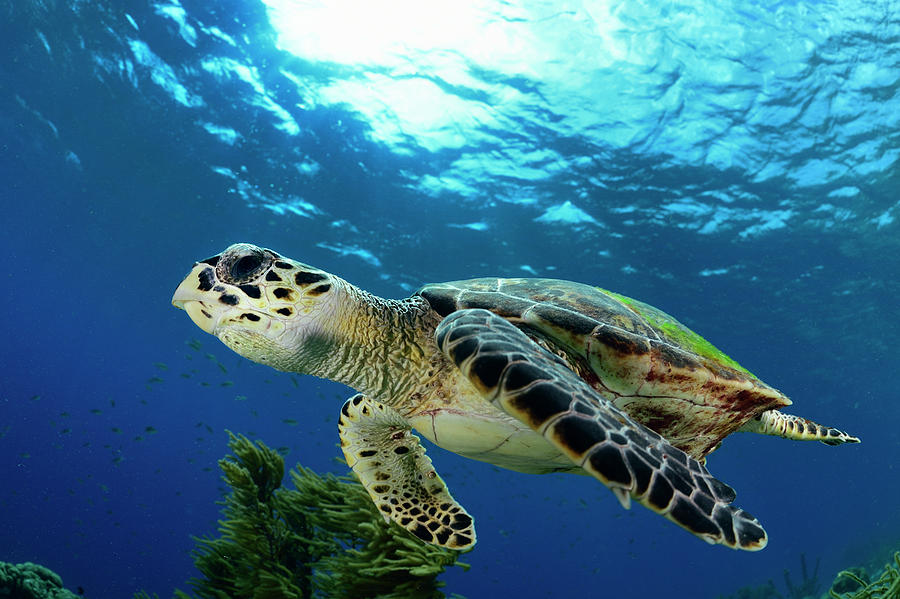


Natural predators of adult hawksbill turtles include sharks, estuarine crocodiles and octopuses.Nesting season in the Caribbean is from April to June but can be as well up to October.After hatching baby turtles immediately head to the sea.Covering the nest with sand and returning to the sea.Digging a pit in the sand and depositing 160 to 240 ping pong ball sized eggs into the nest.Females come ashore to nest (mainly their own nesting beach).Mating in shallow waters close to the shore.Caribbean Hawksbills are sexually mature between the ages of 10 years and 25 years.Mainly specific sponge species, but as well algae, anemones, squid and jellyfish.They prefer coral reefs, rocky areas, shallow coastal areas, lagoons, mangroves and oceanic islands rich in sponges Hatchlings and youngsters up to 4 years live in open ocean waters.Throughout tropical waters of the Atlantic, Pacific and Indian Oceans.Hatchlings: length of 3 cm (1 inch) with a weight of around 15 g (around 0.5 ounce).Adults: length of 65 cm to 90 cm (2 to 3 ft.) with a weight depending on their size of 45 kg to 90 kg (100 lbs.Underside of the shell (called plastron) is yellowish with black spots.Colorful carapace (top shell): general coloration is brown marbled with yellow, orange or reddish-brown splashes.

Small head with a distinctive hawk-like beak.Hawksbill Sea Turtle Facts Scientific NameĮretmochelys imbricate Appearance of Hawksbill Sea Turtles In 2015 a total of only 107 Hawksbill nests with 11782 eggs were recorded. Only about 1% of turtles nesting in and around Cancun are Hawksbill Sea Turtles. Even though the trade of tortoiseshell that nearly resulted in extinction of this beautiful sea turtle has been prohibited, illegal trafficking continues. Hawksbill Sea Turtles are listed by the IUCN Red List as critically endangered (facing an extremely high risk of extinction in the wild in the immediate future). Today only an estimated 20,000 to 23,000 nesting females are still around. Due to the trade of their gorgeous shell, their numbers have declined by over 80% in the last century. Hawksbills are one of the most threatened of the seven remaining sea turtles species.


 0 kommentar(er)
0 kommentar(er)
